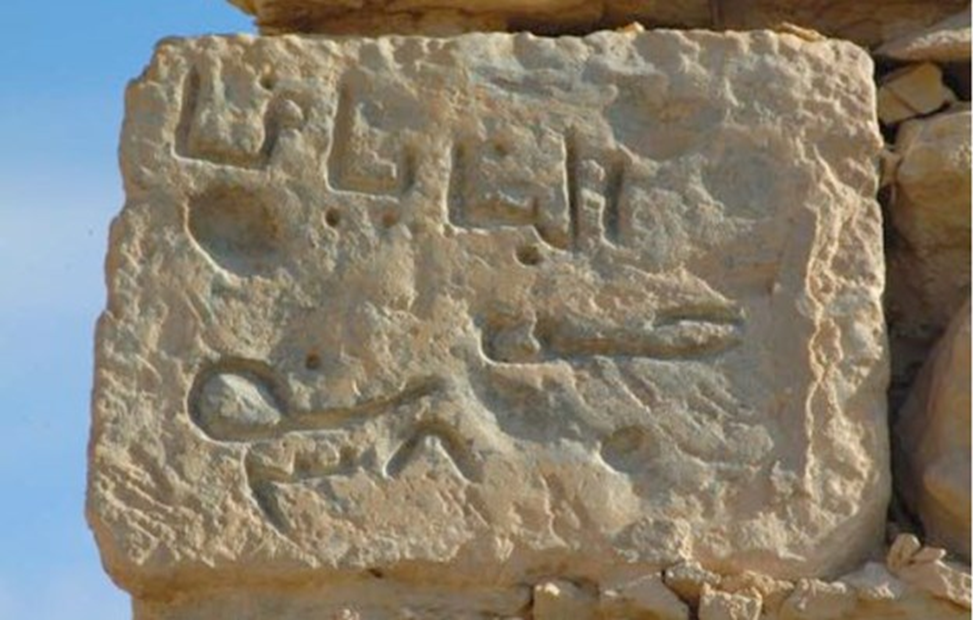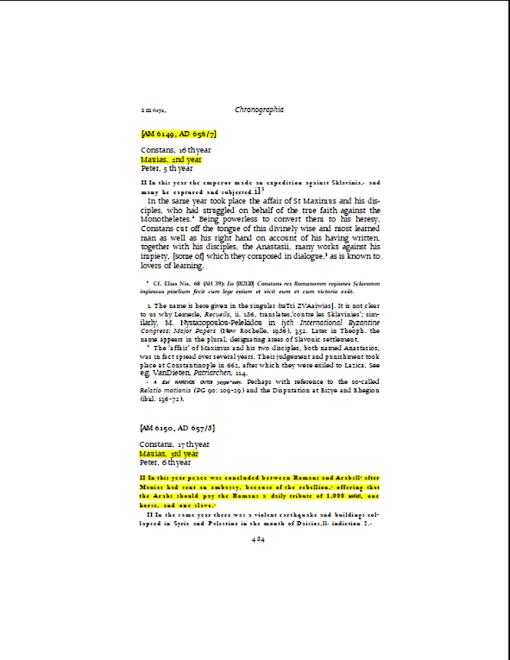Ali ve Muawiye çatışmasının dış tanığı
“Ali Sıffın Savaşı'ndan dört yıl
sonra (661'de) Haricîler tarafından öldürülünce Muawiye'nin önünde halifeliğini
ilan etmesi için hiçbir engel kalmadı.”
Maruni Chronicle’de Ali Muawiye
çatışması, Sıffine dolaylı gönderme, bilgiler biraz eksik ve tartışılır. Yine
de Ali ve Muawiye arasında geçen ve Muawiyenin halifeliğinin altının çizildiği
vakâyinâme, 664'ten kısa bir süre sonra tamamlanan Süryanice dilinde anonim bir
yıllıktır. Yazarının bir Maruni olduğu anlaşıldığı için bu adı almıştır. Bugün
sadece Londra'da, British Library Add'de bulunan tek bir hasarlı 8. veya 9.
yüzyıl el yazmasında hayatta kalmıştır .
AG 969 [658 CE] ...Mu'awiya, Hudhayfa, his sister's son, and
Mu'awiya gave orders that he be put to death. 'Ali,
too, threatened to go up once again against Mu'awiya, but they struck him while
he was at prayer in al-Hira and killed him. Mu'awiya then went down to
al-Hira where all the Arab forces proffered their right hands to him, whereupon
he returned to Damascus.
AG 970 [June 659] [There was an earthquake in Palestine.] In the
same month the bishops of the Jacobites — Theodore and Sabukht — came to
Damascus and held an inquiry into the Faith with the Maronites in the presence
of Mu'awiya. When the Jacobites were defeated, Mu'awiya ordered them to pay
20,000 denarii and commanded them to be silent. Thus there arose the custom
that the Jacobite bishops should pay that sum of gold every year to Mu'awiya,
so that he would not withdraw his protection [lit. "loose his hand upon
them"] and let them be persecuted by the members of the Church. The person
called "Patriarch" by the Jacobites fixed the financial burden that
all the converts of monks and nuns should contribute each year to the payment
in gold and he did the same with all the adherents of his faith. He bequeathed
his estate to Mu'awiya so that out of fear of that man all the Jacobites would
be obedient to him. [There was another earthquake.]
AG 971 [660] many Arabs gathered
at Jerusalem and made Mu'awiya king and he went up and sat down on Golgotha; he
prayed there and went to Gethsemane and went down to the tomb of the blessed
Mary to pray in it. In those days when the Arabs were gathered there with
Mu'awiya, there was an earthquake. [Much of Jericho fell, as well as many
nearby churches and monasteries.] In July of the same year the emirs and many
Arabs gathered and gave their allegiance to Mu'awiya. Then an order went out
that he should be proclaimed king in all the villages and cities of his
dominion and that they should make acclamations and invocations to him.
Mu'awiya also minted gold and silver, but it was not accepted because there was
no cross on it. Furthermore, Mu'awiya did not wear a crown like other kings in
the world. He placed his throne in Damascus and refused to go to Muhammad's
throne.
AG 972 [661] ... When Mu'awiya had acquired the power to
which he had aimed and was at peace from the wars of his people, he broke the
pact with the Romans and refused to accept peace from them any longer. Rather
he said, "If the Romans want peace, let them surrender their weapons and
pay gzîtâ"
Kitâb için;
https://archive.org/details/chronicaminora0000unse/page/54/mode/2up
Suryanca metin ilave edilecek


















































